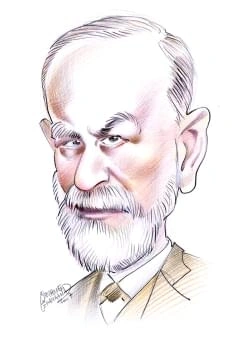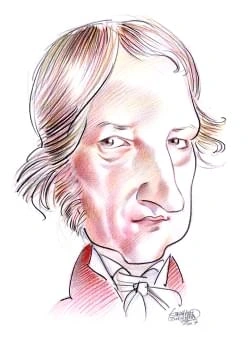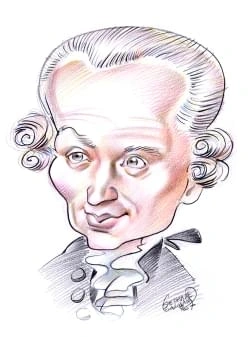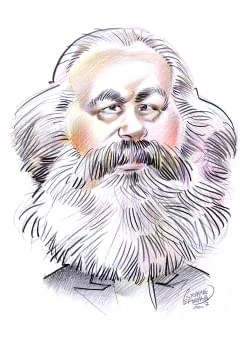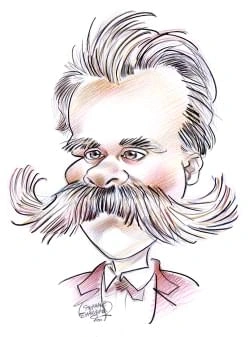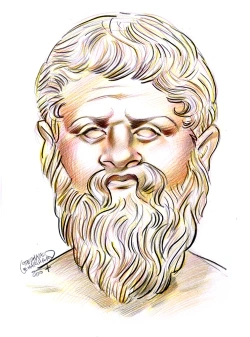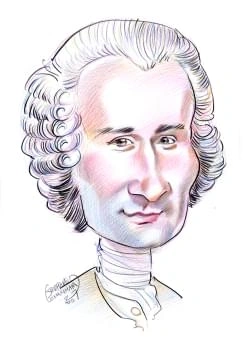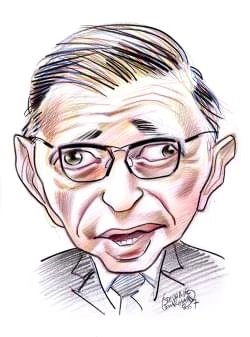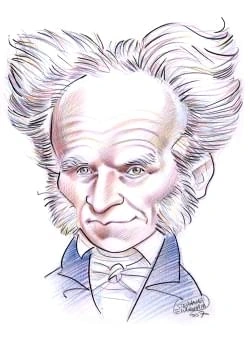189 résultats pour "included"
-
Pan-Africanism.
(in New York City). These congresses were attended by increasing numbers of representatives from the United States, Europe, Africa, and the Caribbean. Severalimportant factors affected the growing popularity of the congresses. First, many delegates were sponsored by international labor movements, which were growing insize and power in the 1920s. A second factor was the growth of the black nationalist movement of Marcus Garvey. The Garvey movement was important in the UnitedStates as a popular ex...
-
Brian Mulroney.
At the party convention Mulroney was one of the candidates who ran against Clark. This time Mulroney did not have to contend with a rival candidate from Québec. Healso had the support of the remnants of the Diefenbaker faction—who disliked Clark even more than they disliked Mulroney. Mulroney was also endorsed by asubstantial group of members of Parliament; this endorsement helped allay concerns about whether he could provide effective leadership in Parliament. Mulroney waselected leader of the...
-
Brian Mulroney - Canadian History.
At the party convention Mulroney was one of the candidates who ran against Clark. This time Mulroney did not have to contend with a rival candidate from Québec. Healso had the support of the remnants of the Diefenbaker faction—who disliked Clark even more than they disliked Mulroney. Mulroney was also endorsed by asubstantial group of members of Parliament; this endorsement helped allay concerns about whether he could provide effective leadership in Parliament. Mulroney waselected leader of the...
-
Declaration of Independence.
communication networks to publicize British actions and encourage demonstrations of defiance. Soon these committees and some colonial legislatures issued a call for anall-colony congress to discuss other appropriate responses to Britain’s actions. The Continental Congress first met in Philadelphia from September to the end of October1774. This body did not plan for war; instead, it debated the extent to which the colonies should carry their resistance to Great Britain. The First Continental Cong...
-
Declaration of Independence - U.
communication networks to publicize British actions and encourage demonstrations of defiance. Soon these committees and some colonial legislatures issued a call for anall-colony congress to discuss other appropriate responses to Britain’s actions. The Continental Congress first met in Philadelphia from September to the end of October1774. This body did not plan for war; instead, it debated the extent to which the colonies should carry their resistance to Great Britain. The First Continental Cong...
-
Cold War.
With this, all the countries of Eastern Europe were under Communist control, and the creation of the Soviet bloc was complete. The events of 1948 contributed to agrowing conviction among political leaders in both the United States and the USSR that the opposing power posed a broad and fundamental threat to their nation’sinterests. The Berlin blockade and the spread of Communism in Europe led to negotiations between Western Europe, Canada, and the United States that resulted in the NorthAtlantic...
-
Cold War .
With this, all the countries of Eastern Europe were under Communist control, and the creation of the Soviet bloc was complete. The events of 1948 contributed to agrowing conviction among political leaders in both the United States and the USSR that the opposing power posed a broad and fundamental threat to their nation’sinterests. The Berlin blockade and the spread of Communism in Europe led to negotiations between Western Europe, Canada, and the United States that resulted in the NorthAtlantic...
-
Cold War - U.
With this, all the countries of Eastern Europe were under Communist control, and the creation of the Soviet bloc was complete. The events of 1948 contributed to agrowing conviction among political leaders in both the United States and the USSR that the opposing power posed a broad and fundamental threat to their nation’sinterests. The Berlin blockade and the spread of Communism in Europe led to negotiations between Western Europe, Canada, and the United States that resulted in the NorthAtlantic...
-
-
Tanzania - country.
The population of Tanzania (2008 estimate) is 40,213,162, giving the country an overall population density of 45 persons per sq km (118 per sq mi). Yet the populationdistribution is irregular, with high densities found near fertile soils around Kilimanjaro and the shores of Lake Malawi, and comparatively low density throughout much ofthe interior of the country. In the late 1960s and 1970s the Tanzanian government resettled most of the rural population in collective farming villages as part of i...
-
Accounting and Bookkeeping.
The proliferation of mandated notes that accompany financial statements is a particularly visible example. Such notes disclose information that is not already included inthe body of the financial statement. One of the very first notes identifies the accounting methods adopted when acceptable alternative methods also exist, or when theunique nature of the company's business justifies an otherwise unconventional approach. The notes also disclose information about lease commitments, contingent liab...
-
Tokyo - geography.
The port of Tokyo has expanded tremendously in recent years and is now the second largest in Japan (after Yokohama) in value of trade. In 1993 it accounted forapproximately 14 percent of all trade by Japan’s ports. Reasons for the port’s growth include the deepening of sea lanes in Tokyo Bay, large reclamation projects tocreate room for new facilities and container terminals, and improvements to storage and distribution facilities. The largest categories of exports from the port of Tokyoare mach...
-
Syria - country.
D Education Primary education is free and compulsory for all children aged 6 through 12. Some 78 percent of the adult Syrian population was estimated to be literate in 2005.Primary schools enrolled 2.8 million pupils in the 2000 school year, and 1.1 million students attended secondary schools and vocational institutes. In 1998, 94,110 Syrian students were enrolled in institutes of higher education. Syria has universities in Damascus, Ḩalab, Ḩim ş, and Al L ādhiq īyah. Also in Damascus isthe Ar...
-
Labor Unions in Canada - Canadian History.
job. Before collective bargaining begins, workers elect a bargaining committee. The bargaining committee determines the workers’ demands and strategy innegotiations with the employer. Local unions usually are part of national or international unions. These national and international unions employ a staff for organizing workers at the local level, doingresearch, educating union members about labor and political matters, and working with local union leaders. Unions hold regular conventions of dele...
-
Serbia - country.
Minority groups speak their own languages, such as Albanian and Hungarian. Bosniaks generally speak Bosnian and write it with the Latin alphabet. Serbs are by tradition Orthodox Christians. The Roman Catholic and Protestant churches also have adherents in Serbia. Most of the ethnic Albanians of Kosovo areSunni Muslims ( see Sunni Islam), as are the Bosniaks of the Sandžak region. Bosniaks are descendants of Slavs who converted to Islam in the 15th and 16th centuries. B Education The leading in...
-
Women's Rights.
In 1840 Lucretia Mott and Elizabeth Cady Stanton traveled to London to attend the World Anti-Slavery Convention. Upon arrival, however, the women were barred fromparticipating in the conference and forced to sit behind a curtain. This experience of discrimination inspired them to organize the first women’s rights convention. Thisconvention met in Seneca Falls, New York, on July 19 and 20, 1848. The Seneca Falls Convention attracted more than 200 women and approximately 40 men. For theconvention,...
-
United States History - U.
and improved upon the designs of Arab sailing ships and learned to mount cannons on those ships. In the 15th century they began exploring the west coast ofAfrica—bypassing Arab merchants to trade directly for African gold and slaves. They also colonized the Madeira Islands, the Azores, and the Cape Verde Islands andturned them into the first European slave plantations. The European explorers were all looking for an ocean route to Asia. Christopher Columbus sailed for the monarchs of Spain in 149...
-
-
United States History - U.
and improved upon the designs of Arab sailing ships and learned to mount cannons on those ships. In the 15th century they began exploring the west coast ofAfrica—bypassing Arab merchants to trade directly for African gold and slaves. They also colonized the Madeira Islands, the Azores, and the Cape Verde Islands andturned them into the first European slave plantations. The European explorers were all looking for an ocean route to Asia. Christopher Columbus sailed for the monarchs of Spain in 149...
-
Martin Van Buren.
political ambitions. The Clintonians cited as one example of Van Buren's unscrupulous methods his support of a convention in 1821 to revise the state's constitution. Van Buren and hisBucktails said they wanted to make the constitution more democratic. The Clintonians retorted that the real aim was to oust them from office. Both sides were right. Therevised constitution introduced a needed extension of voting rights and improved the operation of the state government. However, it also removed many...
-
Martin Van Buren
political ambitions. The Clintonians cited as one example of Van Buren's unscrupulous methods his support of a convention in 1821 to revise the state's constitution. Van Buren and hisBucktails said they wanted to make the constitution more democratic. The Clintonians retorted that the real aim was to oust them from office. Both sides were right. Therevised constitution introduced a needed extension of voting rights and improved the operation of the state government. However, it also removed many...
-
Native American Art.
folding, braiding or weaving, could also be sewn onto the hide. The production of decorated clothing and bags increased after contact with Europeans as a greater variety of textiles and other materials became available throughtrade. Imported glass beads inspired native women, who quickly adapted quillwork techniques for the creation of beaded apparel. European curvilinear and floraldesigns of the 19th century proved as meaningful for the native women who worked with them as they were for the non...
-
National Parks and Preserves.
Some ibex raised in Italy’s 700 sq km (220 sq mi) Gran Paradiso National Park (1922) were transferred to aid herd restoration elsewhere in the country. Switzerlandreturned lynx to Swiss National Park to keep red deer populations in check. The growth of national parks also enabled many European countries to restore forests thathad given way to industrialization by the early 20th century. Africa’s wildlife was hunted heavily from the late 19th century well into the 20th century. By 1920 big-game h...
-
Sydney (Australia) - geography.
blocks in the eastern suburbs and around railway stations elsewhere; and homes on large lots in the outer suburbs, especially those to the northwest. For publichousing, the state government built a number of high-rise apartment blocks in run-down inner suburbs after World War II (1939-1945). These housing projects weresoon deemed unsuccessful and were discontinued because they fostered crime and other social problems. More recently, public housing has taken the form of separateor semidetached ho...
-
Italy - country.
C Natural Resources Italy is poor in natural resources. Much of the land is unsuitable for agriculture because of mountainous terrain or unfavorable climate. Italy, moreover, lacks substantialdeposits of basic natural resources such as coal, iron, and petroleum. Natural gas is the country’s most important mineral resource. Other deposits include feldspar andpumice. Many of Italy’s mineral deposits on the islands of Sicily and Sardinia had been heavily depleted by the early 1990s. Italy is rich...
-
Johann Sebastian Bach
I
INTRODUCTION
Johann Sebastian Bach (1685-1750), German composer and one of the world's greatest musical geniuses.
Bach served nine years at the Weimar court, first as organist and then, from 1714, as concertmaster as well. His employer, Wilhelm Ernst, duke of Weimar, was a greatadmirer of the organ, and spurred by the duke’s enthusiasm Bach proceeded to compose a vast number of unprecedented works for the instrument: the Orgelbüchlein (“Little Organ Book”), a collection of small chorale preludes for the church year; the so-called Great Eighteen Chorales of larger size; and a series of dramatic preludes a...
-
-
Johann Sebastian Bach.
from his duties, and even tossed him into jail for “too obstinately requesting his dismissal.” But after several weeks the duke saw it was of no use and let him go. E Köthen: 1717-1723 Bach’s new employer, Leopold, loved and understood music and could play the violin, viola da gamba, and harpsichord as well as sing bass. The prince held Bach in highregard and stood as godfather for his seventh child. Bach, in turn, named the child Leopold August in his employer’s honor. Bach later said that the...
-
Austria - country.
Wildlife is generally scarce in Austria. Chamois, deer, and marmot are still present; bear, which were once abundant, are now almost completely absent. Hunting isstrictly regulated to protect the remaining species. F Environmental Issues Industrial emissions, a high volume of tourist traffic, and significant air pollution from other countries—principally the former East Germany, Slovakia, and the CzechRepublic—combine to make acid rain the major environmental problem in Austria. One-quarter of...
-
Rocket.
the vacuum of space, however, demonstrated that this belief was not true. In fact, rockets produce more thrust in the vacuum of space than on Earth. Air pressure andfriction with the air reduce a rocket’s thrust by about 10 percent on Earth as compared to the rocket’s performance in space. B Thrust and Efficiency Thrust is a measurement of the force of a rocket, or the amount of “push” exerted backward to move a rocket forward. Thrusts vary greatly from rocket to rocket.Engineers measure thrust...
-
Rocket - astronomy.
the vacuum of space, however, demonstrated that this belief was not true. In fact, rockets produce more thrust in the vacuum of space than on Earth. Air pressure andfriction with the air reduce a rocket’s thrust by about 10 percent on Earth as compared to the rocket’s performance in space. B Thrust and Efficiency Thrust is a measurement of the force of a rocket, or the amount of “push” exerted backward to move a rocket forward. Thrusts vary greatly from rocket to rocket.Engineers measure thrust...
-
Federal Republic of Germany - country.
B Rivers and Lakes Rivers have played a major role in Germany’s economic development. The Rhine River flows in a northwesterly direction from Switzerland through much of westernGermany and The Netherlands into the North Sea. It is a major European waterway and a pillar of commerce and trade. Its primary German tributaries include theMain, Mosel, Neckar, and Ruhr rivers. The Oder (Odra) River, along the border between Poland and Germany, runs northward and empties into the Baltic; it provides an...
-
Animal - biology.
Vertebrates are customarily divided into cold-blooded and warm-blooded animals, but these labels are not very precise. Biologists normally use the terms ectoderm and endoderm to describe temperature regulation more accurately. An ectoderm is an animal whose temperature is dictated by its surroundings, while an endoderm is one that keeps its body at a constant warm temperature by generating internal heat. Reptiles, amphibians, and fish are ectoderms. Although they do not maintain a constant wa...
-
Atom
I
INTRODUCTION
Water Molecule
A water molecule consists of an oxygen atom and two hydrogen atoms, which are attached at an angle of 105°.
spontaneously break apart and change, or decay, into other atoms. Unlike electrons, which are fundamental particles, protons and neutrons are made up of other, smaller particles called quarks. Physicists know of six different quarks.Neutrons and protons are made up of up quarks and down quarks —two of the six different kinds of quarks. The fanciful names of quarks have nothing to do with their properties; the names are simply labels to distinguish one quark from another. Quarks are unique amo...
-
Railroads.
III GAUGES The gauge of track is the distance between the inner edges of the rails at points 1.59 cm (0.626 in) below the top of the heads. In the United States, Canada, theUnited Kingdom, Mexico, Norway, Sweden, and much of continental Europe, the standard gauge is 143.51 cm (56.5 in). Why this measurement became the standard isa matter of speculation. Probably the tradition is inherited from early tramroads built to accommodate wagons with axles 1.5 m (5 ft) long; some of the early edge rail...
-
-
United Kingdom - country.
B Natural Regions and Topography The island of Great Britain can be divided into two major natural regions—the highland zone and the lowland zone. The highland zone is an area of high hills andmountains in the north and west. The lowland zone in the south and east consists mostly of rolling plains. The zones are divided by an imaginary line running throughEngland from the River Exe on the southwest coast to the mouth of the River Tees on the northeast coast. The lowland zone has a milder climat...
-
France - country.
In both the Paris and Aquitaine basins, fertile soils derived from limestone and wind-deposited dust, called loess, have supported prosperous agriculture since ancienttimes. Other lowlands in France are scattered and relatively small. They include the Alsace Plain in the east, bordering Germany, the valley of the Rhône River in thesoutheast, and the Languedoc Plain along the Mediterranean coast. A2 Uplands France contains several regions of uplands, the worn down remains of ancient mountain sys...
-
Atom - chemistry.
Atoms have several properties that help distinguish one type of atom from another and determine how atoms change under certain conditions. A Atomic Number Each element has a unique number of protons in its atoms. This number is called the atomic number (abbreviated Z). Because atoms are normally electrically neutral,the atomic number also specifies how many electrons an atom will have. The number of electrons, in turn, determines many of the chemical and physical properties ofthe atom. The ligh...
-
Canada.
Six general landform regions are distinguishable in Canada: the Appalachian Region, the Great Lakes and St. Lawrence Lowlands, the Canadian Shield, the Great Plains,the Canadian Cordillera, and the Canadian Arctic Archipelago. B1 Appalachian Region and Great Lakes and St. Lawrence Lowlands Eastern Canada consists of the Appalachian Region and the Great Lakes and St. Lawrence Lowlands. The Appalachian Region embraces Newfoundland Island, NovaScotia, New Brunswick, Prince Edward Island, and the G...
-
Canada - country.
Six general landform regions are distinguishable in Canada: the Appalachian Region, the Great Lakes and St. Lawrence Lowlands, the Canadian Shield, the Great Plains,the Canadian Cordillera, and the Canadian Arctic Archipelago. B1 Appalachian Region and Great Lakes and St. Lawrence Lowlands Eastern Canada consists of the Appalachian Region and the Great Lakes and St. Lawrence Lowlands. The Appalachian Region embraces Newfoundland Island, NovaScotia, New Brunswick, Prince Edward Island, and the G...
-
Canada - Canadian History.
Six general landform regions are distinguishable in Canada: the Appalachian Region, the Great Lakes and St. Lawrence Lowlands, the Canadian Shield, the Great Plains,the Canadian Cordillera, and the Canadian Arctic Archipelago. B1 Appalachian Region and Great Lakes and St. Lawrence Lowlands Eastern Canada consists of the Appalachian Region and the Great Lakes and St. Lawrence Lowlands. The Appalachian Region embraces Newfoundland Island, NovaScotia, New Brunswick, Prince Edward Island, and the G...
-
Space Exploration - astronomy.
to produce 250,000 newtons (56,000 lb) of thrust. The Germans launched thousands of V-2s carrying explosives against targets in Britain and The Netherlands. Whilethey did not prove to be an effective weapon, V-2s did become the first human-made objects to reach altitudes above 80 km (50 mi)—the height at which outer spaceis considered to begin—before falling back to Earth. The V-2 inaugurated the era of modern rocketry. A2 Early Artificial Satellites During the years following World War II, the...
}})
